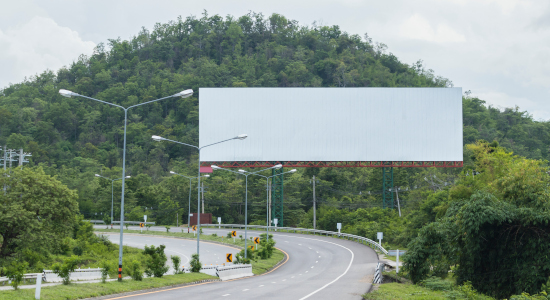
Dec. 20, 2019 – The Wisconsin Supreme Court has unanimously ruled that the state transportation department could not order the removal of an interstate adjacent billboard before adopting formal administrative rules that barred the owner from a curing a defect.
An advertising company obtained a permit to build a double-sided, 1,344 square-foot billboard in Stevens Point and did so in 1991, when the adjacent roadway was a state highway. In 1996, the state highway was redesignated as Interstate-39.
Lamar Central Outdoor LLC bought the billboard in 1999. More than a decade later, in 2012, Lamar applied for a permit to remove weeds that partially blocked the billboard from view, which sparked an inquiry from the state Department of Transportation (DOT).
DOT learned that while the billboard was originally placed in a “business area” – billboards can only be in “business areas” – the billboard’s status changed to “legal, nonconforming” when the state highway was redesignated as an interstate highway.
Further, the DOT learned that the billboard had previously been enlarged temporarily, and “legal, nonconforming” signs that are enlarged are subject to removal as illegal.
Thus, DOT sent Lamar Central an order to remove the billboard. Lamar challenged the order, but the Division of Hearings and Appeals affirmed, concluding that removing the panel that enlarged the billboard did not restore its status to legal, nonconforming.
A circuit court affirmed, as well as a state appeals court. But in Lamar Central Outdoor LLC v. State of Wisconsin Division of Hearings and Appeals, 2019 WI 109 (Dec. 19, 2019), the Wisconsin Supreme Court unanimously reversed.
The DOT had argued that when Lamar Central temporarily enlarged the billboard, it became illegal and that status was irreversible – Lamar Central could not bring the sign back into conformance because the sign was no longer in a business area.
But Lamar Central argued that the DOT’s prior practice was much different. That is, previously, owners of “legal, nonconforming” signs had 60 days to cure a violation of a signage permit. A violation could be cured and an illegal status could be reversed.
The previous practice was based on the DOT’s interpretation of Wis. Stat. section 84.30(11), which says the DOT can remove nonconforming signs “unless such sign is brought into conformance” within 60 days of providing notice to the owner.
DOT’s interpretation was that Lamar Central’s sign must be removed to be in “conformance” because its status, on that property, was now “illegal” status.
The DOT did not dispute that it changed its position, eliminating Lamar Central’s ability to cure. But the agency argued that rulemaking procedures were not required to make the change because it was merely correcting an erroneous interpretation of the law.
Specifically, the DOT pointed to Wis. Stat. section 227.10(1), which says agencies must promulgate rules on statements of general policy and interpretation of a statute.
But the statute also says “a statement of policy or interpretation of a statute made in a decision of a contested case … or in an agency decision upon or disposition of a particular matter as applied to a specific set of facts does not render it a rule or constitute specific adoption of a rule and is not required to be promulgated as a rule.”
“The gist of the argument seems to be that the Department is free to adopt any reasonable statutory interpretation in wishes – sans rulemaking – so long as it does so in a contested case or disposition of a particular matter,” wrote Justice Danial Kelly.
But Justice Kelly, and the rest of the justices on the court, did not accept that argument. “The plain meaning of Wis. Stat. § 227.10(1), the meaning that makes sense of both sentences, is that it describes only one pathway by which an agency can adopt a new interpretation of an ambiguous statute: The agency must adopt a rule,” Kelly wrote.
As for the statute’s language about contested cases, the court concluded that it did not relinquish the DOT’s obligation to promulgate a rule.
“It merely recognizes that, in resolving specific matters, agency decisions will often contain – but not create – a statement of policy, or interpretation of a statute as applied to the matter at hand, and that they need not adopt a new rule for each specific matter they resolve,” Justice Kelly wrote.
“The second sentence does not say that an agency need not promulgate a rule embodying the new interpretation of an ambiguous statute before implementing it in a specific case.”
Justice Kelly noted that nothing in section 227.10(1) “authorizes the Department to adopt its ‘no-cure’ interpretation through the simple expedient of ordering Lamar to remove the billboard.”
The supreme court noted that agencies can correct previously erroneous applications of a plain and unambiguous statute without rulemaking. “But when an agency changes its interpretation of an ambiguous statute, it is engaging in rulemaking,” Justice Kelly wrote.
The court concluded that Wis. Stat. section 84.30(11), which allows sign owners to come back into conformance, is ambiguous. That is, it could be conformance with the law when the permit originally issued, or conformance with current law. It was not clear.
